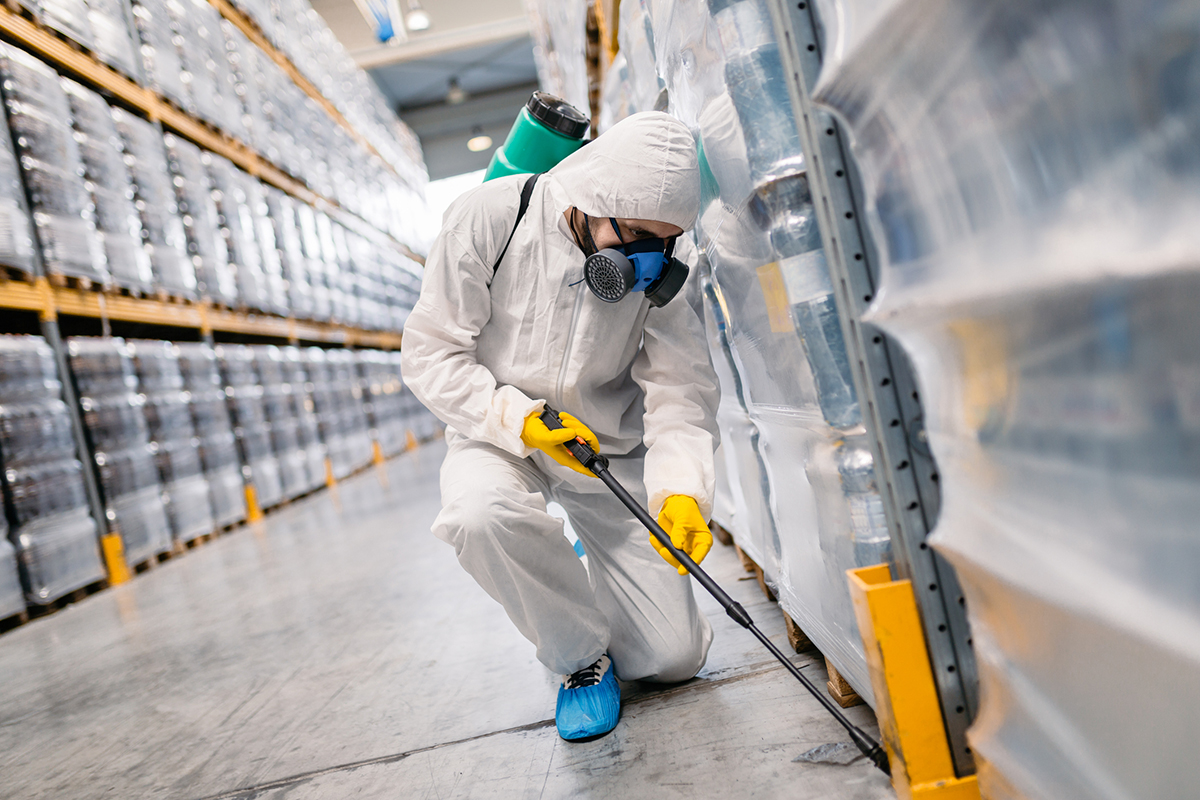Bed Insect Therapy Breakdown: Comparing Chemical Vs. Non-Chemical Solutions
In the world of pest control, specifically when managing the persistent problem of bed pests, the choice between chemical and non-chemical treatment options can be an essential one. Both techniques provide distinctive benefits and drawbacks, influencing elements such as effectiveness, safety and security factors to consider, and general expense. By checking out the nuanced information of each technique, a more clear understanding of which course to seek in dealing with a bed bug problem can be acquired.
Performance of Chemical Therapies
Chemical therapies for bed pest infestations have been extensively identified for their potent and quick efficacy in removing these bugs. When thinking about the efficiency of chemical treatments, it is important to understand that they can provide a fast and detailed option to a bed insect problem. Professional pest control specialists commonly rely upon pesticides to target bed bugs at various phases of their life process, including grownups, eggs, and fairies. These chemicals normally work by interrupting the bed pests' nerve system, resulting in paralysis and ultimate fatality.
Furthermore, chemical treatments have the advantage of offering recurring impacts, suggesting that they can remain to get rid of bed pests also after the initial application. This residual action is particularly beneficial in combating any kind of prospective re-infestations. In addition, the quick action of chemical treatments can bring relief to people facing serious bed pest invasions, permitting them to reclaim control of their home promptly.
Safety Worries With Chemical Solutions
One crucial facet that calls for mindful consideration when using chemical remedies for bed pest therapy is making sure the safety and security of occupants and the setting. Exposure to specific chemicals utilized in bed pest treatments can lead to respiratory problems, skin irritation, or various other negative reactions, especially in individuals with pre-existing conditions or level of sensitivities.
Moreover, the environmental influence of chemical services is one more substantial factor to consider. Some pesticides used in bed bug therapies might be hazardous to beneficial pests, wildlife, and ecological communities if they leach into the soil or water systems. It is crucial to use chemical treatments judiciously, following security standards, and considering less toxic alternatives to reduce these risks and guarantee the risk-free and reliable administration of bed bug invasions.
Benefits of Non-Chemical Strategies
Thinking about the potential safety and security worries and environmental influence associated with chemical options for bed pest therapy, discovering non-chemical techniques offers a promising option with several unique benefits. Non-chemical treatments are environmentally pleasant, as they do not contribute to air or water air pollution, making them a sustainable option for pest control.
In addition, non-chemical options can be reliable in targeting bed bugs, consisting of hard-to-reach areas where chemical therapies may not permeate - A1 pest control services charlotte. Methods such as heat treatment, vacuuming, steam cleaning, and cushion coverings give complete removal without the use of damaging chemicals.
Limitations of Non-Chemical Treatments

Additionally, non-chemical therapies often need several applications to attain effective obliteration. This can be time-consuming and may not always ensure full elimination of all bed pests and their eggs, particularly in concealed or hard-to-reach areas.
In addition, the success of non-chemical treatments heavily counts on appropriate implementation and thoroughness, which can be challenging for bed bugs individuals without expert competence. Insufficient application of non-chemical methods might lead to insufficient elimination, bring about relentless invasions and the demand for added therapies.
Consequently, while non-chemical treatments have their benefits, it is important to acknowledge these restrictions and consider them when identifying the most reliable strategy for handling bed pest invasions.
Expense Contrast: Chemical Vs. Non-Chemical Options
Given the constraints associated with non-chemical therapies, a vital facet to evaluate in the Our site context of bed pest management is the expense contrast in between chemical and non-chemical options. In contrast, non-chemical therapies like warmth therapy or vapor can be much more pricey, with costs ranging from $1,000 to $6,000 for a whole home. While the initial price of chemical treatments might appear reduced, multiple treatments might be required to completely get rid of the infestation, potentially raising the overall expense.
Verdict

Thinking about the prospective safety and security concerns and environmental impact linked with chemical solutions for bed insect therapy, discovering non-chemical methods presents a promising alternative with a number of unique benefits.Provided the restrictions linked with non-chemical therapies, a vital element to review in the context of bed insect administration is the expense contrast between chemical and non-chemical choices. In contrast, non-chemical therapies like warmth treatment or heavy steam can be a lot more costly, with prices ranging from $1,000 to $6,000 for a whole home. While the first price of chemical therapies may seem reduced, multiple therapies may be required to fully eliminate the read more invasion, potentially increasing the overall price.In final thought, when comparing chemical and non-chemical bed bug treatment options, it is vital to think about performance, safety, benefits, constraints, and price.
Comments on “A1 Charlotte Pest Control Companies - Your Local Pest Experts”